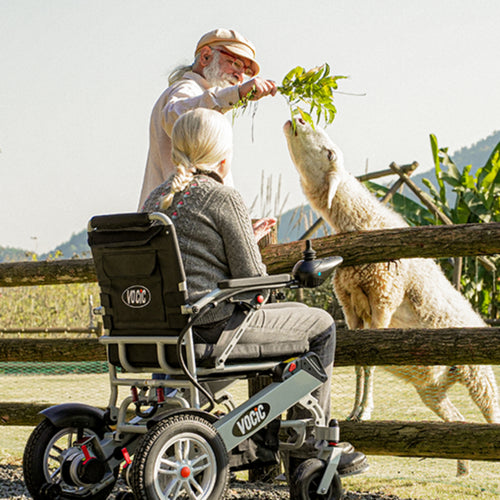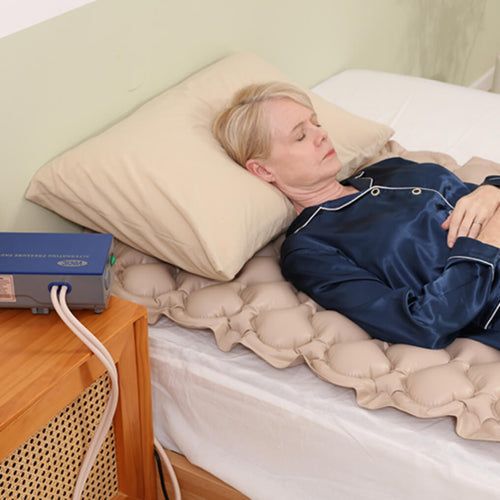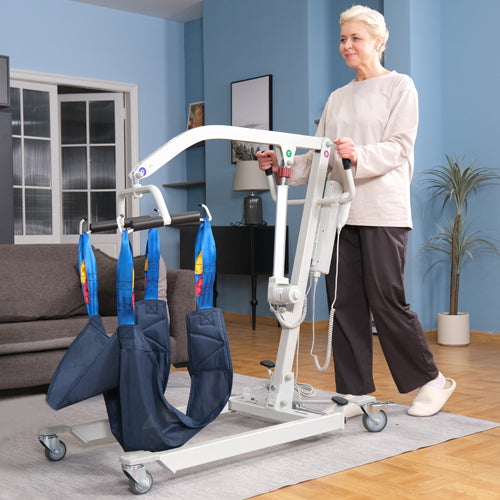When you ride an electric scooter, you might wonder what happens if the battery dies or something goes wrong. Can you still use it manually like a regular scooter? While you can, it's not as easy as you might think.
Electric scooters present significant challenges due to their weight, motor drag, and design limitations. Let's take a look at these factors to help you decide if pushing a scooter is a practical option in an emergency, or if you should look for another solution.
Can Using an Electric Scooter Manually Lead to Damage?
Using your electric scooter manually can lead to damage since these vehicles are designed for motorized use. Manually pushing your scooter can stress the motor and drivetrain, potentially overheating or harming internal components. Additionally, the extra force required to push a heavier scooter can accelerate wear on your tires and bearings, and frequent use may also wear out your brakes prematurely. It's essential to avoid manual operation to prevent costly repairs and extend your scooter’s lifespan.
What Are The Challenges of Using a Mobility Scooter Manually?
When you try to use a mobility scooter manually, you will face several challenges, mainly stemming from its design and structure:
-
Weight Issues: While electric scooters are designed to be lightweight mobility scooters, the addition of batteries and motors makes them heavier than traditional scooters. As a result, you may need to apply more force when traveling long distances or uphill.
-
Motor Drag: If the electric scooter's motor creates drag when powered off, you'll find it harder to push than a regular scooter. The drag makes riding feel awkward and can lead to faster fatigue accumulation.
-
Handling Issues: While electric scooters are optimized for performance in power mode, the original design may not provide the same responsiveness and ease of control in manual mode. For example, the steering system may be more difficult to manage accurately due to the change in weight distribution.
-
Wear and Maintenance: Frequent manual use of a mobility scooter can cause components such as tires and brake systems to wear out faster. In addition, for scooters not designed for manual use, this type of operation may also shorten the life of the motor and battery.
-
Efficiency Issues: The wheels and bearings of a mobility scooter are likely designed specifically for power movement, and when you try to push it manually, you may feel greater rolling resistance, which reduces driving efficiency.
-
Safety Note: When using the electric scooter manually, the braking system may not be as direct or effective as in power mode. In emergency braking situations, you may find it difficult to stop quickly, increasing potential safety risks.
Manual Scooters vs. Electric Scooters
Propulsion Method
Manual scooter: Manual scooters are propelled by the rider's own physical strength, requiring you to kick the ground to move forward. This requires varying degrees of physical exertion, which affects travel speed and distance. Typically, manual scooters can maintain an average speed of 5-10 mph, depending on rider effort and terrain conditions.
Electric scooters: Electric scooters are equipped with a motor and rechargeable battery, providing a push-free riding experience. Modern electric scooters can reach speeds of 15-25 mph and travel between 10 and 40 miles per charge, which is determined by battery capacity and motor power.
Speed and Range
Manual scooter: Manual scooters offer a more leisurely pace and are ideal for short trips or as a supplement to public transportation. Their efficiency decreases when traveling over longer distances or on slopes.
Electric scooters: Electric scooters excel in urban environments where longer travel distances are required. As technology has improved, the range of ordinary electric scooters is now able to effectively cover a typical urban commute, reducing travel time compared to walking or manual scooters.
Portability
Manual scooter: Manual scooters weigh between 5-10 pounds, making them very portable. The lightweight design is a great benefit for commuters who need to carry the scooter on public transportation or when climbing stairs.
Electric scooters: Electric scooters, while foldable mobility scooters, weigh much more, typically 15 to 30 pounds, due to the added weight of the battery and motor. This makes it less convenient to transport them manually over long distances or when they are not in use.
Cost
Manual scooter: Manual scooters are very cost-effective, ranging from $30 to $200, making them accessible to a wide range of users. They also have lower ongoing maintenance costs due to their simpler mechanical structure.
Electric scooters: Electric scooters have a higher upfront investment, typically costing $300 to over $1,000. Long-term costs may include electricity for charging, battery replacement, and more frequent maintenance due to the complex electronic system.
Physical Activity
Manual scooter: Manual scooters offer a moderate level of physical activity that can be used to achieve daily exercise goals. Electric scooters do not have this physical activity, making manual scooters a better choice for people who want to increase their physical activity levels.
Electric scooters: Electric scooters offer a convenient and sweat-free riding experience. They are suitable for people who prefer a more comfortable commute, especially in hot or hilly areas where manual propulsion is impractical.
Environmental Impact
Manual scooter: Manual scooters produce zero emissions directly, making them an environmentally sustainable option for short journeys.
Electric scooters: Electric scooters also offer an environmentally friendly alternative to cars, especially if the electricity used for charging comes from renewable energy. However, they do require more resources to manufacture, and battery disposal remains an environmental challenge.

How to Choosing the Right Mobility Scooter for Your Needs?
When choosing a mobility scooter that can be used manually, you can consider the following guidelines to ensure you get the right balance between electric convenience and manual operation capabilities:
-
Look for a Hybrid Design: Choose a scooter with a freewheel mode so you can easily switch between electric and manual operation when needed.
-
Evaluate Weight and Portability: Choose a lightweight model that you can push manually without much effort, and consider whether it can be folded or disassembled for easy transportation.
-
Check the Freewheel Mode Feature: Make sure the scooter has a reliable and user-friendly freewheel mode so you can smoothly disengage from the motor for manual use.
-
Evaluate Comfort and Stability: Prioritize ergonomic handles, a comfortable seat, and good weight distribution to help you easily control the scooter when using it manually.
-
Battery Life and Charging Options: Look for a scooter with decent battery life to reduce how often you need to switch to manual mode and make sure it offers convenient charging options.
-
Consider Terrain and Safety Features: Choose a scooter with large wheels and good suspension to handle different terrains, and make sure it has powerful brakes and safety features that work well in both manual and electric modes.

Alternative Solutions to Manual Operation
If you find that the battery is dead or there are mechanical issues, there are other options to avoid the dangers of manually operating a mobility scooter:
Public Transportation: Many powered mobility scooters can be folded for easy carrying on buses or trains, so public transportation is a viable option in a battery emergency.
Portable Charger: A small portable charger or power bank can quickly charge in an emergency. Some scooters can even be charged on the go if you have a portable power source.
Push Instead of Ride: If the manual operation of the scooter feels too difficult, it may be easier to operate by pushing it, especially over short distances.
FAQs
Can Electric Scooters Use Bike Lanes?
In the United States, whether electric scooters can use bike lanes depends on local and state regulations, as rules vary across different regions. In many cities, electric scooters are allowed in bike lanes as long as they adhere to speed limits (typically around 15 mph or less) and follow the same traffic laws as bicycles. However, some areas may have restrictions, such as banning electric scooters on certain roads, sidewalks, or bike lanes altogether. It's important to check the specific laws in your city or state to ensure you're riding legally and safely.
How can I avoid having to use my electric scooter manually?
To avoid manual use of your e-scooter, make sure the battery is fully charged before each ride and monitor the battery level while in use. Regularly service your scooter to ensure optimal performance, including checking tire pressure and brake function. When planning your route, include nearby charging stations in case you need to charge. Additionally, carrying a portable charger or spare batteries can give you greater peace of mind and reduce the chances of accidentally draining the battery.
What should I do if I need to use my electric scooter manually?
If you need to use an electric scooter manually, first check if it has a freewheel mode to disengage the motor and reduce resistance. This will make it easier to push it. Stick to flat, smooth surfaces to minimize the effort required, and make sure the tires are properly inflated for better control. Hold the handlebars firmly for stability, and ride at a slower speed, especially as the scooter feels heavier than a traditional scooter. For added safety, wearing protective gear such as a helmet is also recommended.









